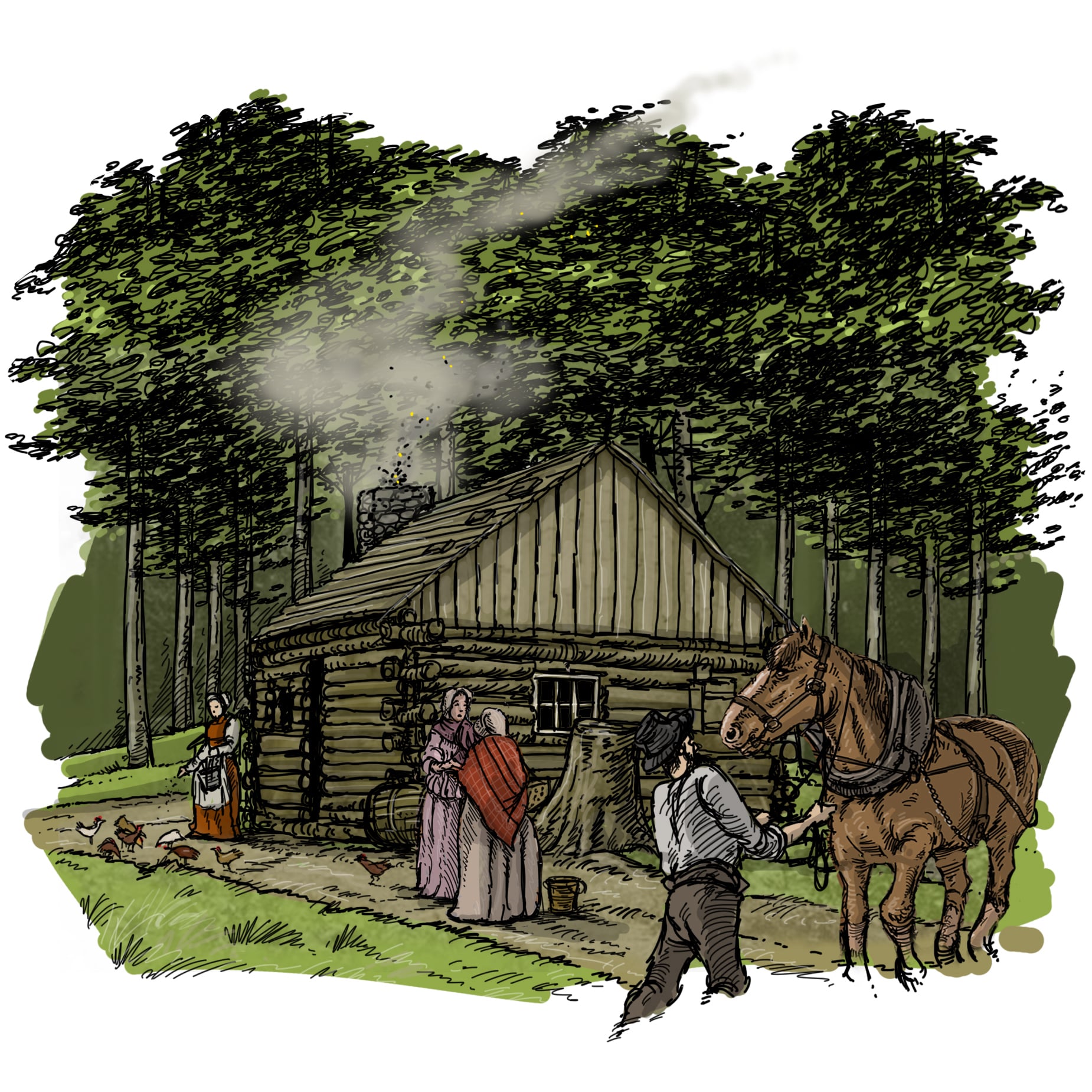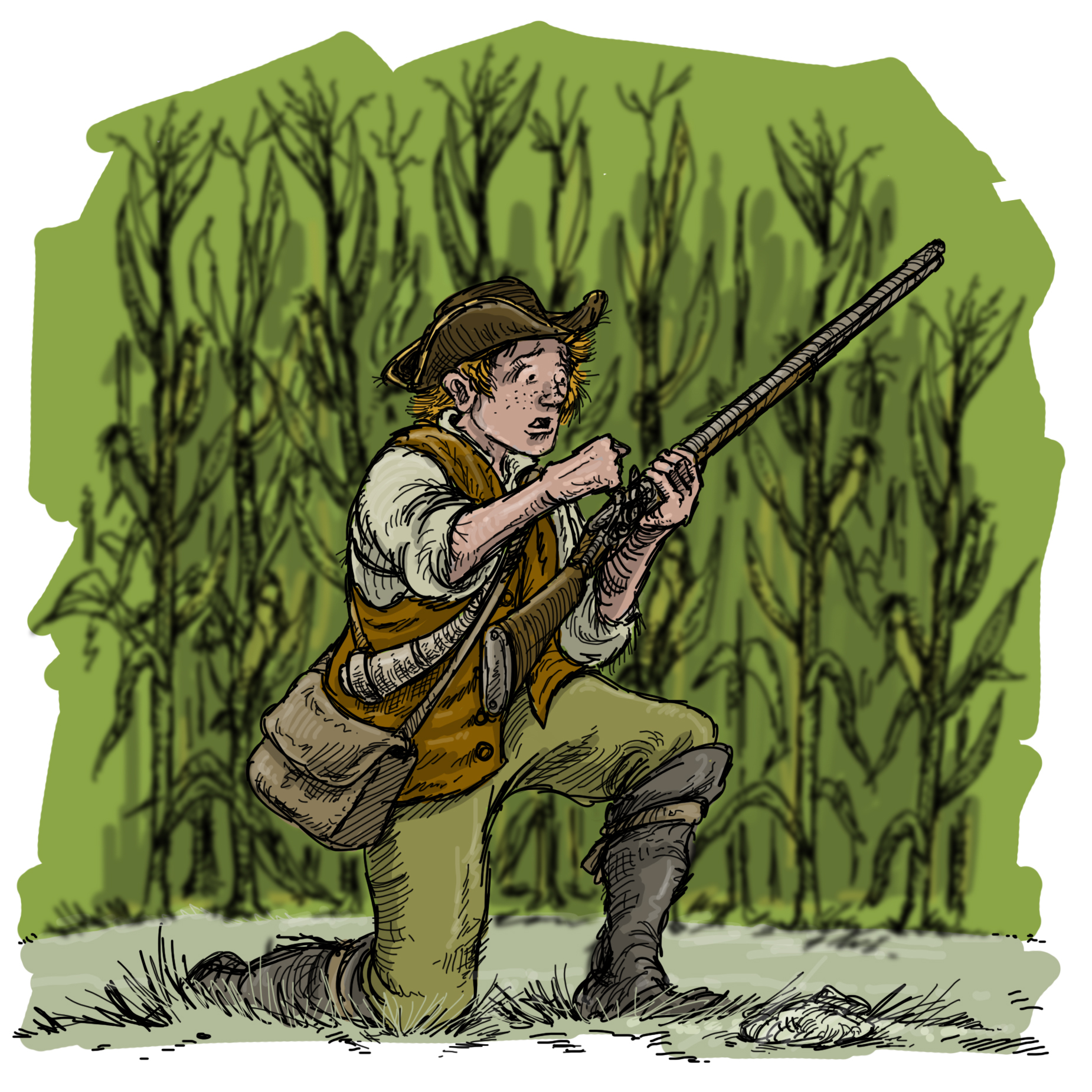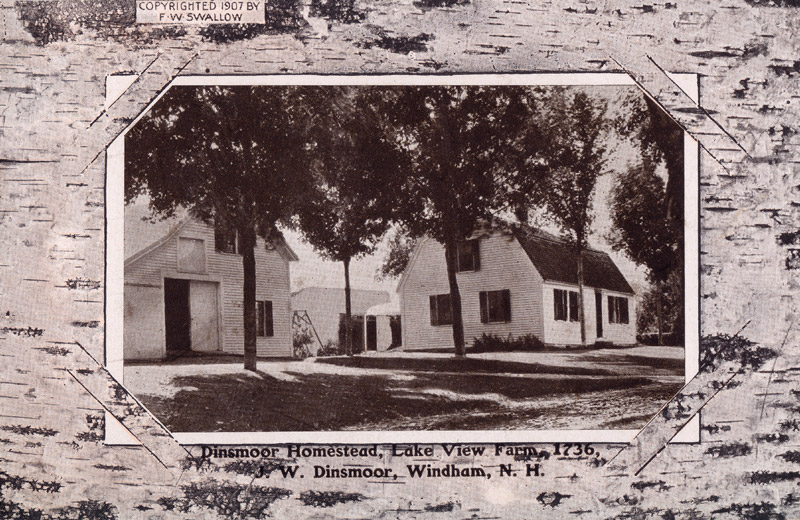

Ulster Scots are often associated with the Frontier.
This is the case, for example, when they arrive in Ulster at the time of the initial plantations, when they are faced with the threat of “the wolf and wood-kern.” It is also the case when they emigrate to America and are pushed away from the coast towards the frontier zone that separates the settler population from the territories of the American Indians.
The following poem, entitled “Jamie Cochran, the Indian captive,” was written by the New Hampshire poet, Robert Dinsmoor, in 1833. (1) Dinsmoor was the descendant of Ulster-Scots settlers who emigrated to America in the 1720s. An edited collection of his poems was published in Boston in 1898, at a period when there was growing interest in the role of the Scotch-Irish in the construction of the United States. Dinsmoor’s poems are of considerable interest. Some contain a number of Ulster-Scots words and expressions, showing how the emigrants’ language use continued to be an influence several generations after the initial emigration.
The poem centres on Jamie Cochran, whose father had come over to Maine from Co. Londonderry in the first major Ulster-Scots migration of 1718. Cochran senior and his four brothers, all of whom migrated to America, had all been present in Londonderry during the siege.
A note to the 1898 collection explains that the events described in the poem date from 1728, i.e. exactly ten years after the arrival of the first five migrant ships from Ulster. Dinsmoor, who wrote the poem in 1833, used the story to recall the orgins of the Cochran family, now long established in America. He tells his readers that the family is originally from Argyleshire in Scotland. They “found a shelter” in “Ulster Province, Erin’s northern strand” before emigrating to America in 1718.
Interestingly, Dinsmoor goes out of his way to underline that, although they had remained almost a century in Ireland, “[t]hose emigrants were not Hibernian blood, / But sturdy Scotsmen true.” This suggests that, already in the 1830s, Dinsmoor thought it necessary to make a clear distinction between the people of “Scotch-Irish” descent and those of “Hibernian” origin. This will become increasingly important in the years after the Famine due to the mass migration of people of Irish Catholic origin to America.
Dinsmoor hints at the piety of these early settlers by slipping in the fact that when they left Ulster, “[t]hey had their ministers to pray and preach.” This remark is clearly linked to his reference to the story of David and Goliath, one of the best-known incidents in the Old Testament (1 Samuel, 17). Dinsmoor can be certain that his public will make all the necessary connections: like David, Jamie had gained his experience with weapons hunting in the wilderness, and, like David, Jamie seems faced with impossible odds. However, the poem suggests that there is another similarity that is key to the outcome: just as David places his trust in what the Old Testament text calls “the living God,” the “Lord of hosts,” so Jamie calls on his “father’s God” for protection before winning the day, single-handedly. When Dinsmoor compares Jamie to “that young Hebrew stripling,” he is illustrating a fundamental reflex within Ulster-Scots culture that constantly draws parallels between the experience of the Ulster Scot and those of Old Testament Israel.
(1) Robert Dinsmoor, “Jamie Cochran: the Indian Captive” [1833], in The Rustic Bard, Boston, Mass., Damrell & Upham, 1898, pp. 43-53.


A surprising aspect of this “captivity narrative” is that, despite his obvious admiration for his young “hero,” Dinsmoor nevertheless builds in to the poem a statement of a fundamental American Indian grievance, voicing their anger at what they see as the lies and double standards of the settlers and at the way they are threatening their way of life by hunting game on their territory without seeking permission or offering compensation.
The hero of my tale is Indian Jamie,
His history I'll give lest you should blame me.
In Ulster Province, Erin's northern strand,
Five shiploads joined to leave that far off land.
They had their ministers to pray and preach,
These twenty families embarked in each.
Here I would note and have it understood,
Those emigrants were not Hibernian blood,
But sturdy Scotsmen true, whose fathers fled
From Argyleshire […]
They found a shelter on the Irish shore
In Ulster, not a century before.
Four of those ships at Boston harbor landed;
The fifth, by chance, at Casco Bay was stranded.
[…]
When Jamie's blood had felt the heat
Of sixteen summers, high his pulses beat.
He then from bears could guard his father's corn,
Armed with his gun, shot-bag, and powder horn.
The howling wolf that he was wont to hear
And catamount [a wild cat] made music to his ear.…
As deeds of valor add to courage strength,
So this young hero proved it out at length.
Like that young Hebrew stripling, when he slew
A bear and lion — more courageous grew
And fearless, fought and killed Goliah too.
Jamie goes on a hunting expedition and is captured by a band of “Indian warriors.”
A flock of ducks, through the thick air above,
With whistling wings, all lighted in a cove
Within short distance ; Jamie cocked his gun
And made towards his game upon the run.
His fire was true, and plainly he could tell
Some lay dead, and others wounded fell.
He left his musket on the shore,
His powder horn, shot-bag, and all his store;
With ducks and drakes his knapsack soon was filled,
No matter then, how many he had killed.
With success flushed he turned toward the shore
And lo ! he saw an armed Sagamore [a chief]
Take up his gun, powder horn, and shot;
Ten Indian warriors stood there on the spot.
The leader of the group explains that Jamie is their captive and that they intend to sell him to the French in Canada with whom the British had been at war.
You shoot our bears, the Indians want their grease,
You shoot our ducks, and carry off our geese;
You kill our moose and deer, no heed our speeches,
Eat up their flesh and wear their skins for breeches;
Although they intend to take him to Canada to sell him to the French, they do not hesitate to tell him bluntly that, if he resists, “your scalp may do as well.”
Jamie goes out of his way to obey their orders and gradually wins their confidence, all the time planning to escape.
Now Jamie tried his masters to obey,
Nor made the least attempt to run away.
He seemed to place his life in their protection,
And by hypocrisy gained their affection.
As they grew intimate, he seemed contented;
They lived like brothers when they got acquainted.


Although he is clearly horrified by the idea, he decides that the only way he can escape is to kill the two young men who are guarding him.
And Jamie's mind absorbed in deep reflection,
Besought his father's God for his protection. […]
But Jamie's mind on his escape was bent,
That to accomplish was his whole intent.
He waits his chance, and, having carefully prepared his attack, cold-bloodedly murders both of his captors.
The poet, who clearly admires the survival instinct of the young captive, ends describing how what he calls “this poor Scottish boy” manages to make it back home, where he is received with open arms.
His pack supplied him to his father's home,
Where parents mourned as dead their favorite boy.
There they embraced him with ecstatic joy.
Gladly they saw the trophies he had won,
While he returned the knapsack and the gun.
The Indian scalps proved Jamie's victory grand,
As did Goliah's head in David's hand.
The poem – a real curiosity – is of interest in that it gives us an idea of the complex nature of the contacts that were taking place along the American frontier in the early days of the initial Ulster-Scots migration. Despite the naivety of its form and style, Dinsmoor’s text shows something of the breadth of emotion generated by these - often extremely violent - contacts with the unknown “Other” and the mixture of curiosity and fear evident on both sides.
He is clearly not interested in exploring the many complex moral issues behind the colonial experience that would occur to readers of today.
However, despite these silences, the narrative tells us about another important aspect of Ulster-Scots culture – how the descendants of these early settlers were reading their everyday experience through the lens of the Bible. There is clearly a readiness to confuse the space of the frontier and the wilderness of the Old Testament. Such constant “translation” of events in terms of a biblical model is a recurring cultural reflex.
IMAGE: The Dinsmoor homestead. The 1718 Project Discover Ulster Scots https://discoverulsterscots.com/emigration-influence/america/1718-migration